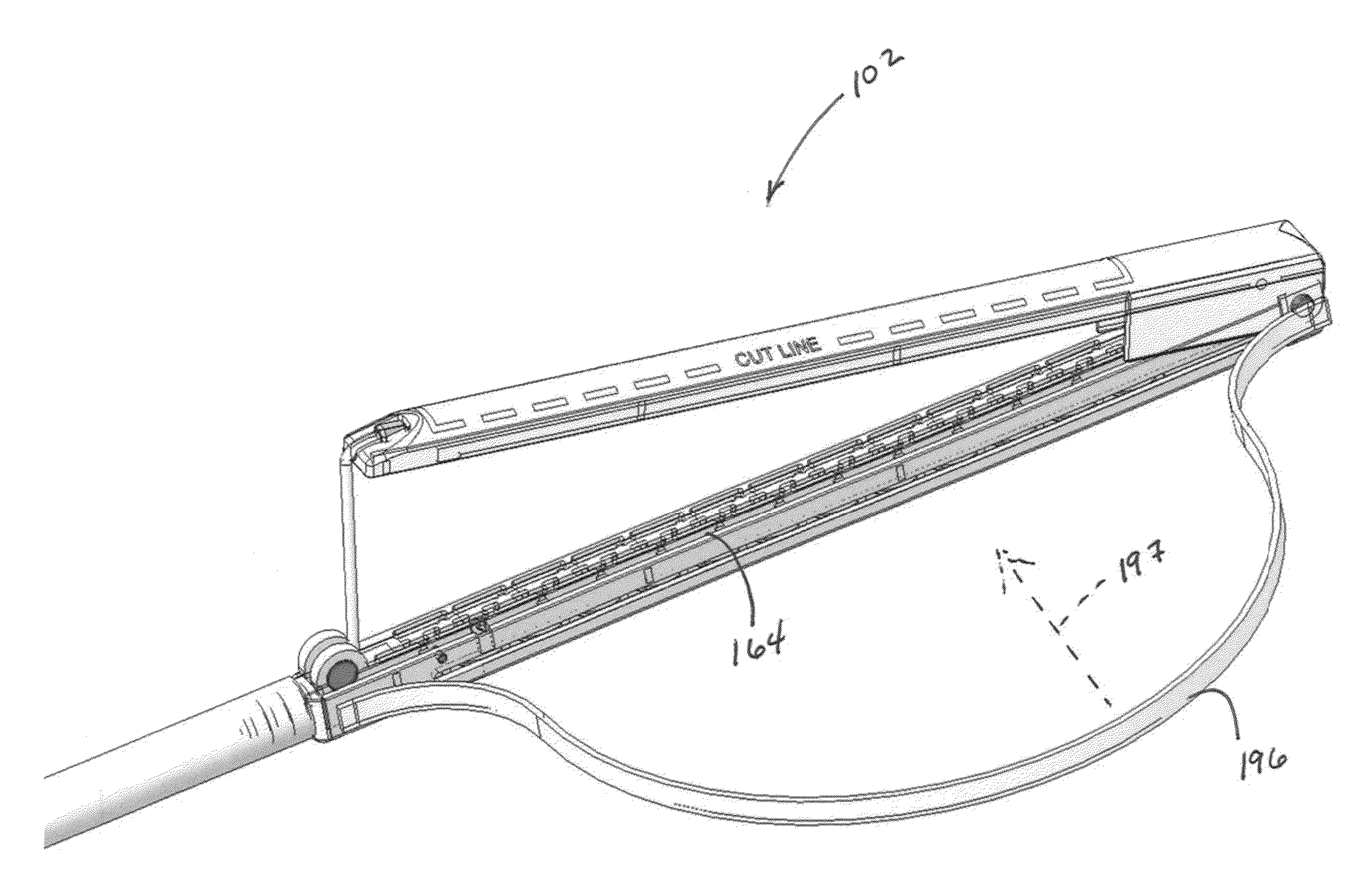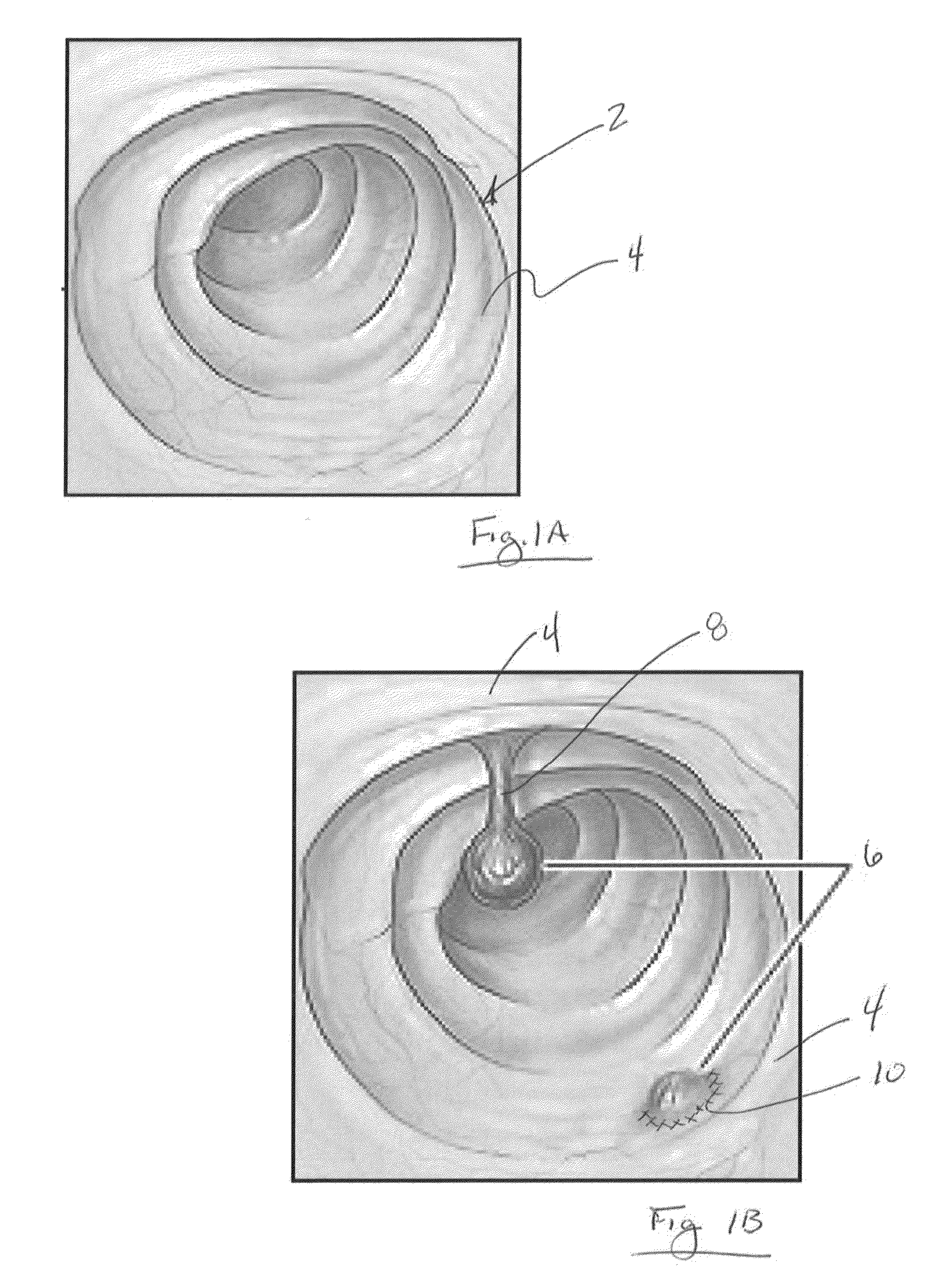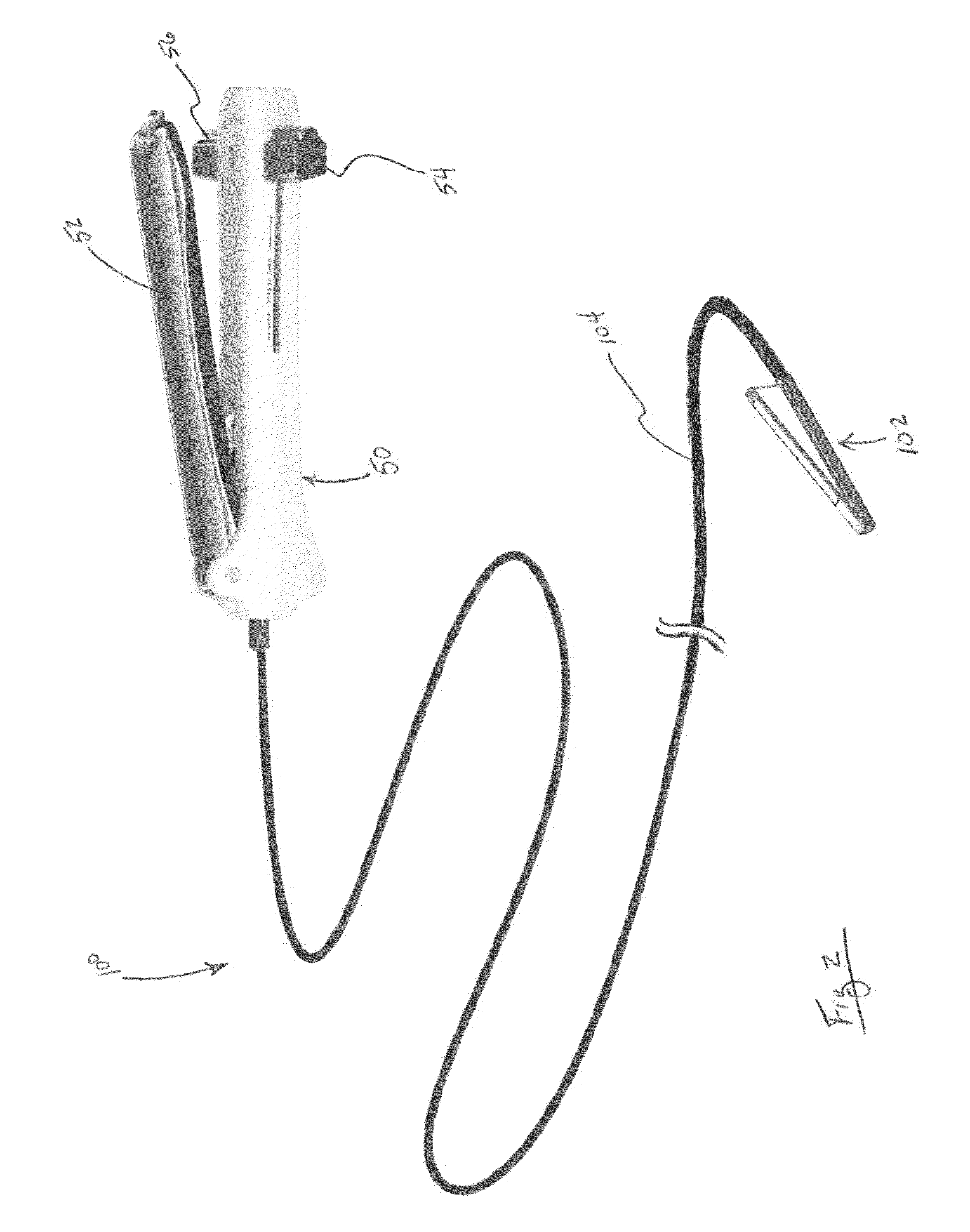Tissue removal and closure device
a tissue and closure technology, applied in the field of surgical instruments, can solve the problems of reducing the service life of the patient,
- Summary
- Abstract
- Description
- Claims
- Application Information
AI Technical Summary
Benefits of technology
Problems solved by technology
Method used
Image
Examples
Embodiment Construction
[0039]Methods and devices described herein provide for separating a suspect region of tissue from a base region of tissue and securing the base region of tissue that remains after the excision of the suspect tissue. Although the following description discusses the use of mechanical fasteners and a mechanical cutting instrument, any number of fastening modes and cutting modes can be employed in accordance with the disclosure herein as long as such modes do not conflict with the teachings disclosed herein. In addition, any number of combinations of aspects of various species, or combinations of the species themselves are within the scope of this disclosure. In addition, the methods, devices and systems described herein are well suited towards endoscopic procedures, but are not limited to such procedures. The disclosure can be combined with open procedures as well.
[0040]FIG. 2 illustrates an example of a surgical device 100 according to the present disclosure where the device 100 inclu...
PUM
 Login to View More
Login to View More Abstract
Description
Claims
Application Information
 Login to View More
Login to View More - R&D
- Intellectual Property
- Life Sciences
- Materials
- Tech Scout
- Unparalleled Data Quality
- Higher Quality Content
- 60% Fewer Hallucinations
Browse by: Latest US Patents, China's latest patents, Technical Efficacy Thesaurus, Application Domain, Technology Topic, Popular Technical Reports.
© 2025 PatSnap. All rights reserved.Legal|Privacy policy|Modern Slavery Act Transparency Statement|Sitemap|About US| Contact US: help@patsnap.com



